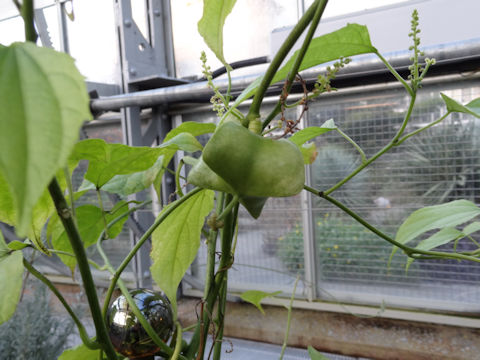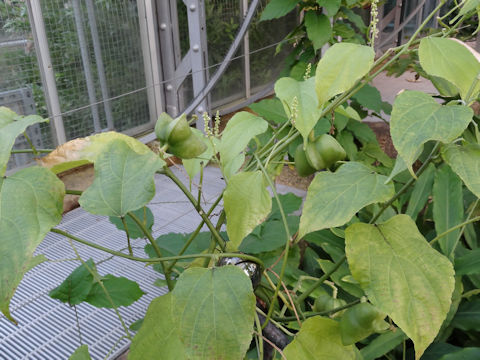
|
The Inca-peanut (Plukenetia volubilis) belongs to Euphorbiaceae (the Spurge family). It is a perennial herb that is native to much of tropical South America, as well as some of the Caribbean. In the Amazon Rainforest in Peru, it has been cultivated by indigenous people for centuries. Nowadays, it is cultivated commercially in South East Asia, most notably in Thailand. This herb grows up to a height of 2 m. The leaves are alternate, heart shaped, serrated, with long petioles. The male flowers are small, white, and arranged in clusters. Two female flowers are located at the base of the inflorescence. The fruits are capsules of 3-5 cm in diameter with 4-7 points, are green and ripen blackish brown. Its raw seeds and leaves contain toxins, these components are safe for consumption after roasting.
|

